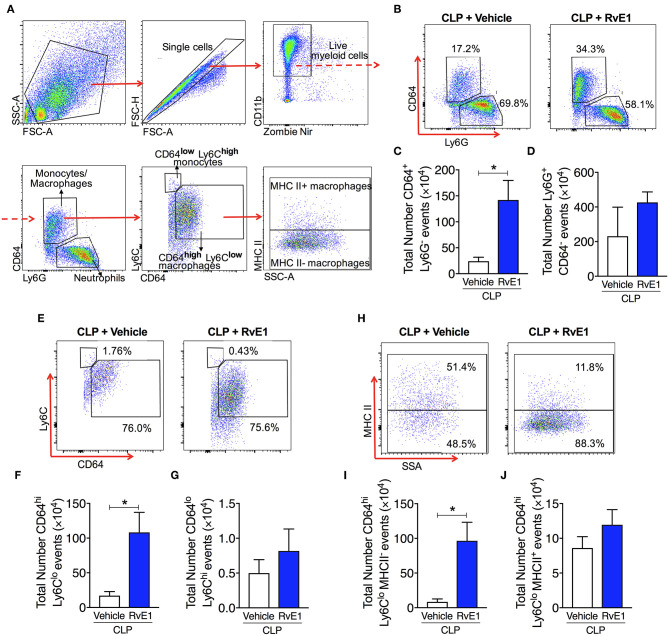Figure 3.
RvE1 treatment enhances MHC II− macrophage recruitment in peritoneal cavity. Mice underwent CLP surgery. One hour after CLP, mice were treated with either RvE1 (1 μg/mouse i.v.) or vehicle (100 μl PBS, 0.1% Ethanol). (A) Flow cytometry gating strategy of mouse peritoneal immune cells 24 h post-CLP. (B) Scattergrams illustrating monocyte/macrophage (identified as Ly6G−CD64+) and neutrophil (identified as Ly6G+CD64−) positive events in peritoneal lavages from CLP mice with vehicle or RvE1 treatment. (C,D) Cumulative data for peritoneal CD64+ monocytes/macrophages and Ly6G+ neutrophils. (E) Scattergrams illustrating macrophage (identified as CD64highLy6Clow) and monocyte (identified as CD64lowLy6Chigh) positive events in peritoneal lavages from CLP mice with vehicle or RvE1 treatment. (F,G) Cumulative data for peritoneal CD64highLy6Clow macrophages and CD64lowLy6Chigh monocytes. (H) Scattergrams illustrating MHC II− macrophage and MHC II+ macrophage positive events in peritoneal lavages from CLP mice with vehicle or RvE1 treatment. (I,J) Cumulative data for peritoneal MHC II− macrophages and MHC II+ macrophages. Data are expressed as mean ± SEM of four mice for vehicle group and five mice for RvE1 treatment group. Data were analyzed by unpaired Student's t-test. *P < 0.05 vs. CLP + Vehicle group.

